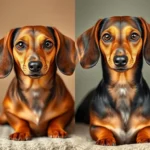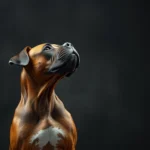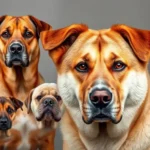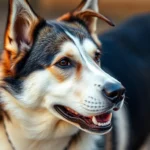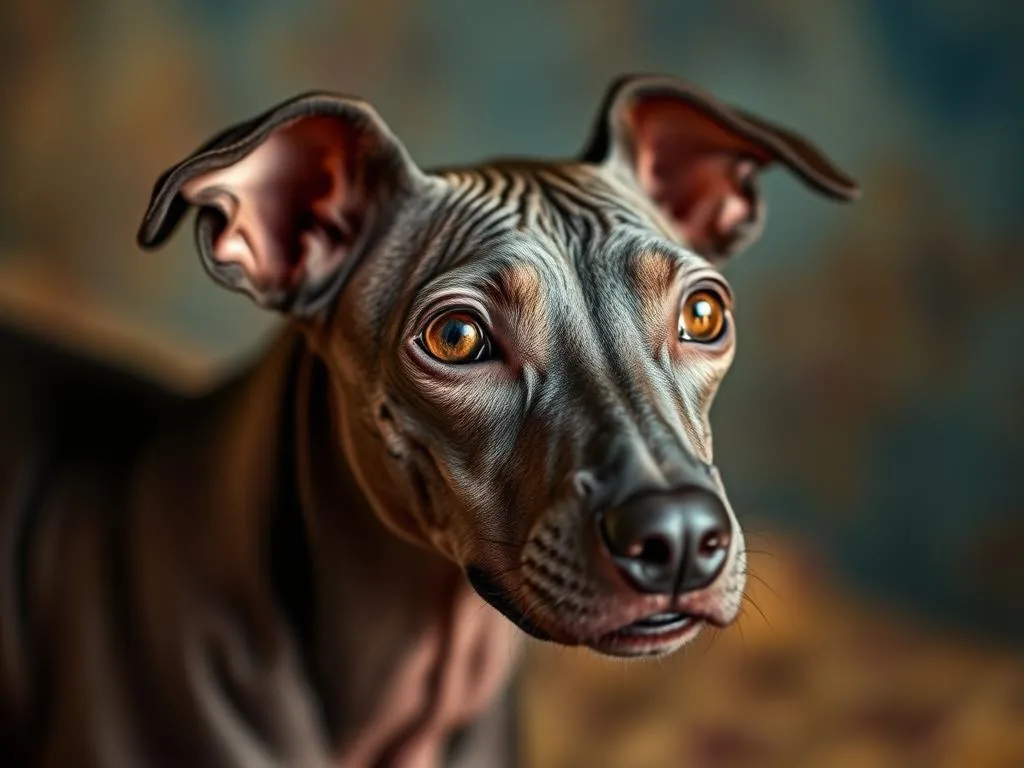
Introduction
Understanding different dog breeds is crucial for anyone considering dog ownership. Each breed comes with unique traits, behaviors, and care requirements that can significantly influence your experience as a pet owner. Among these breeds, the Ecuadorian Hairless Dog stands out as a unique and fascinating option. This breed not only has a rich history but also offers distinctive characteristics that can make it an excellent choice for various households. Choosing the right breed is essential, as it can determine the compatibility between you and your furry friend, ensuring a harmonious relationship.
Understanding Dog Breeds
Definition of Dog Breeds
A dog breed is a specific group of domestic dogs that have been selectively bred for particular traits, behaviors, and physical characteristics. These breeds can vary widely in size, appearance, temperament, and purpose. Understanding these characteristics is crucial for potential owners to ensure they choose a breed that fits their lifestyle and preferences.
Role of Genetics in Dog Breeds
Genetics plays a significant role in determining the traits of dog breeds. Selective breeding, where certain dogs are chosen to mate based on desirable traits, has led to the creation of distinct breeds with unique characteristics. This genetic foundation influences everything from coat type to temperament, and understanding these factors can help prospective owners make informed decisions about which breed is right for them.
Overview of Popular Dog Breeds
Classification of Dog Breeds
Dog breeds can be classified in various ways, including by size and purpose. This classification helps potential owners understand the general characteristics of each breed and how they might fit into their lives.
Grouping by Size
- Small Breeds: Typically weigh under 20 pounds. Examples include Chihuahuas, Pomeranians, and Dachshunds.
- Medium Breeds: Usually weigh between 20 and 60 pounds. Examples include Beagles, Bulldogs, and Spaniels.
- Large Breeds: Generally weigh over 60 pounds. Examples include Labrador Retrievers, German Shepherds, and Golden Retrievers.
Grouping by Purpose
- Working Breeds: Bred for specific tasks such as guarding or pulling sleds (e.g., Rottweilers, Siberian Huskies).
- Herding Breeds: Developed to herd livestock (e.g., Border Collies, Australian Shepherds).
- Companion Breeds: Primarily bred for companionship (e.g., Cavalier King Charles Spaniel, Shih Tzu).
Brief Description of Each Category
Each category of dog breeds has its unique set of characteristics:
- Small Breeds: Often characterized by their playful nature and adaptability to small living spaces. They may require less exercise but still need mental stimulation.
- Medium Breeds: Known for their versatility, these dogs can excel in various tasks, from family companions to working roles.
- Large Breeds: Typically require more space and exercise. They are often known for their loyalty and protective instincts.
The Ecuadorian Hairless Dog: A Closer Look
Origin and History
The Ecuadorian Hairless Dog, or “Perro Sin Pelo del Ecuador,” has a rich cultural background rooted in Ecuador’s indigenous practices. This breed is believed to have existed for centuries, initially serving as a companion and guard dog for its owners. The breed’s history is intertwined with Ecuadorian culture, symbolizing warmth and companionship. In recent years, efforts have been made to preserve this unique breed, highlighting its significance in both local and international communities.
Physical Characteristics
The Ecuadorian Hairless Dog is easily recognizable due to its distinctive appearance.
- Size: This breed typically stands between 12 to 24 inches tall at the shoulder, making it a medium-sized dog.
- Coat: As implied by the name, this breed is known for its lack of hair. However, some may have a fine layer of fuzz, particularly on the legs and tail.
- Color: They come in various colors, including black, gray, and brown, often with unique patterns.
The Ecuadorian Hairless Dog has a unique skin texture that requires specific care to maintain its health and appearance.
Temperament and Behavior
Generally, the Ecuadorian Hairless Dog is known for its affectionate and playful nature. These dogs tend to bond closely with their owners, making them excellent companions. They are often described as:
- Loyal: They form strong attachments to their families.
- Intelligent: Quick learners, making training relatively straightforward.
- Sociable: Enjoy interaction with other pets and people, which makes them suitable for families.
Health Considerations
Like all dog breeds, the Ecuadorian Hairless Dog may be prone to certain health issues. Common health considerations include:
- Skin Problems: Due to their hairlessness, they may be more susceptible to sunburn and skin irritations.
- Dental Issues: This breed can also face dental problems, such as missing or misaligned teeth.
To maintain the health of an Ecuadorian Hairless Dog, regular veterinary check-ups, a balanced diet, and proper skin care are essential.
Caring for an Ecuadorian Hairless Dog
Grooming Needs
Grooming is particularly important for the Ecuadorian Hairless Dog, as they lack a traditional coat.
- Skin Care: Regular moisturizing is necessary to prevent dryness and irritation. Products formulated for sensitive skin are ideal.
- Bathing: Regular baths help keep their skin clean and free from excess oils. However, excessive bathing can lead to dryness, so finding the right balance is key.
Recommended grooming tools include soft cloths for skin care and gentle shampoos designed for hairless breeds.
Nutrition and Diet
The nutritional needs of an Ecuadorian Hairless Dog can differ from those of other breeds.
- Quality Diet: A high-quality dog food rich in protein is essential for maintaining their energy levels and overall health.
- Feeding Practices: Regular feeding schedules and portion control can help prevent obesity, which can lead to additional health issues.
Consulting with a veterinarian for tailored dietary advice is always recommended.
Exercise Requirements
Regular exercise is vital for the Ecuadorian Hairless Dog to maintain a healthy weight and mental stimulation.
- Daily Walks: These dogs enjoy daily walks and should be taken out for at least 30 minutes of exercise each day.
- Playtime: Engaging in playtime activities, such as fetching or agility exercises, can also help meet their exercise needs.
Adapting exercise routines to fit the dog’s energy level and preferences is essential for ensuring their happiness and well-being.
Training and Socialization
Early Training Importance
Early training is crucial for the Ecuadorian Hairless Dog to ensure they develop into well-behaved companions.
- Positive Reinforcement: Utilizing positive reinforcement techniques can encourage desired behaviors and strengthen the bond between owner and dog.
- Basic Commands: Teaching basic commands, such as sit, stay, and come, is beneficial for safety and communication.
Socialization Tips
Socialization is equally important for this breed to help them grow into confident and friendly adults.
- Exposure to New Environments: Regularly exposing your dog to various people, pets, and environments can help them adapt and reduce anxiety.
- Group Classes: Enrolling in puppy socialization classes can provide structured opportunities for social interaction.
Creating a balanced environment where the Ecuadorian Hairless Dog can thrive socially is vital for their development.
Common Myths and Misconceptions
Myths about Hairless Dog Breeds
There are several myths surrounding hairless dog breeds that can lead to misunderstandings about their care and health:
- Allergy-Free: Many people believe hairless dogs are hypoallergenic, but this is not necessarily true. Allergies can still be triggered by skin dander and saliva.
- No Grooming Required: While they don’t require traditional grooming, Ecuadorian Hairless Dogs still need skin care and bathing routines.
Clarifying Breed Specifics
It’s essential to ensure that potential owners have accurate information about the Ecuadorian Hairless Dog. Understanding their specific needs and characteristics can help prevent misguided ownership and ensure that these dogs are well cared for.
Conclusion
In summary, the Ecuadorian Hairless Dog is a unique breed with a rich history, affectionate temperament, and specific care needs. Understanding their characteristics, grooming requirements, and health considerations is vital for anyone thinking about welcoming one into their home. Owning an Ecuadorian Hairless Dog can be incredibly rewarding, as they offer companionship, loyalty, and love. For those considering dog ownership, thorough research and responsible pet ownership practices will lead to a fulfilling relationship with these remarkable dogs.

